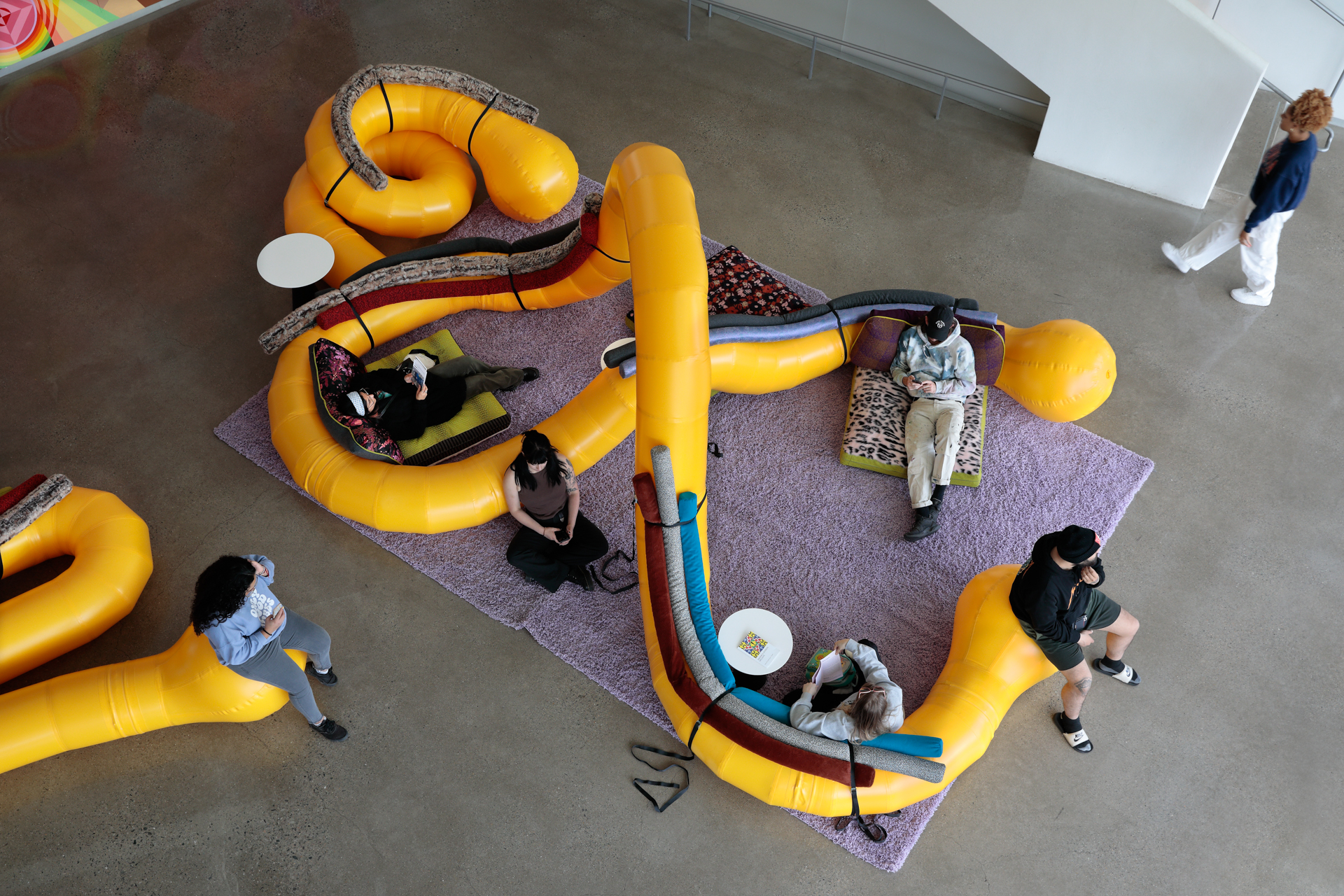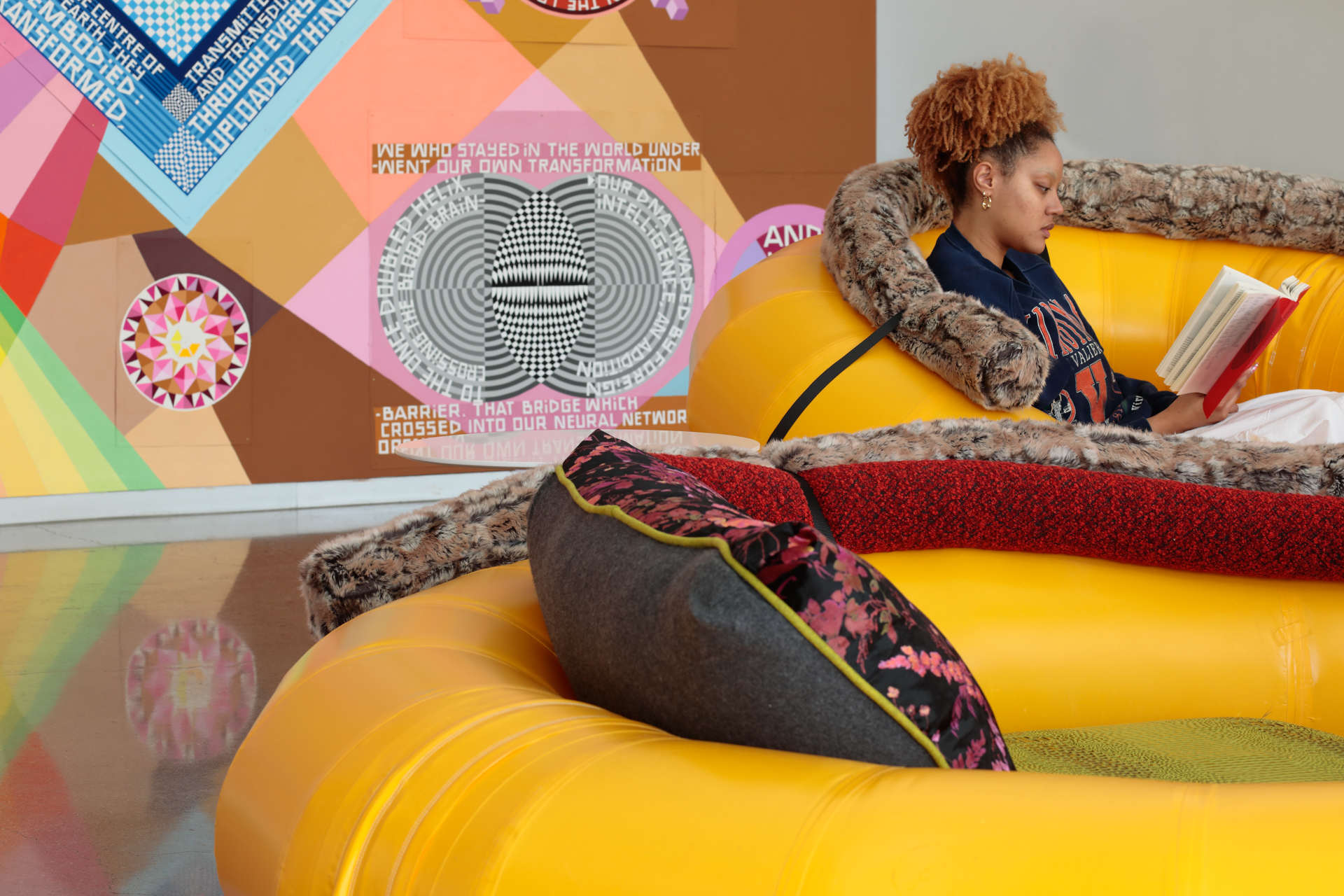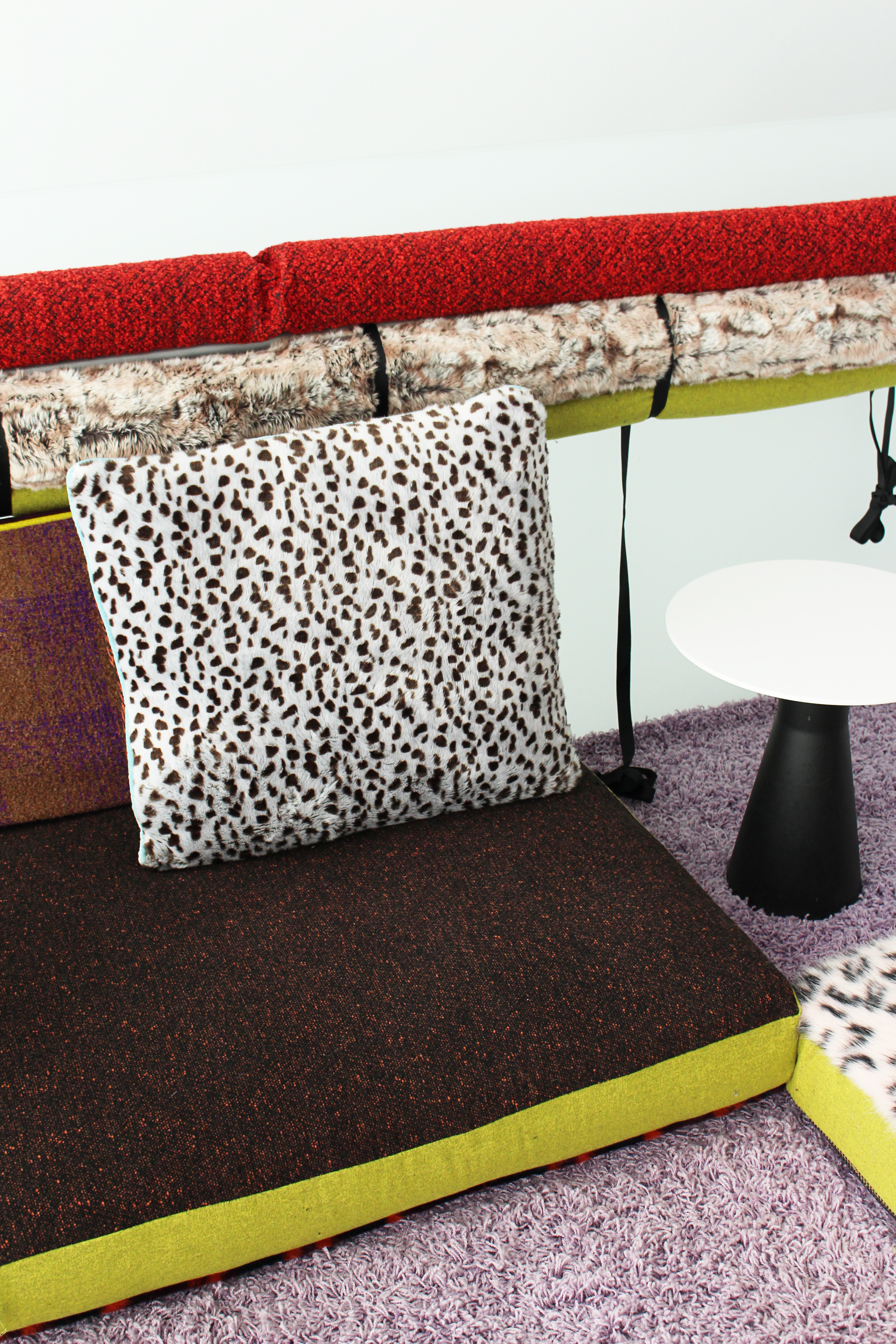SIT(UATION)
research and production for a modular
inflatable seating environment for reading
research and production for a modular
inflatable seating environment for reading
with nick meehan
commissioned by the ICA in richmond, VA
fabricated by Pneuhaus



SIT(UATION) is social sculpture and mutable seating system designed to situate the body as the central agent in the act of reading. The design borrows its structure and behavior from the Physarum Polycephalum, or “slime mold.” The work pulls from a mélange of lineages, including radical architecture movements of the 1960s–70s, post-modern seating design a-la Peter Opsvik, mutisensory education, embodiment practices, and interspecies systems of mutual aid in the anarchist tradition of Peter Krepotnik.
To read more about the melange of influence that composed the research phase of this project see the general page here.
For the original commission at VCU I worked with architect Nick Meehan to evolve the form of a rejected proposal from 2020. We realized early on that conventional fabrication would be prohibitively expensive, and decided to pursue inflatable fabrication, which despite some constraints, opened up new opportunities for the design of each module. For the fabrication we worked with Pneuhaus, a studio of architects and designers that, among other things, design and fabricate inflatbles and public spaces for play.
For the installation we looked more closely at the life cycle of the slime mold. The work and films of biologist John Bonner helped identify distinct phases in the slime mold life cycle—which we used to stucture the manner in which the inflatables behaved in the museum.
Phase I: Aggregation
![Aggregation fig 1.1]()
![Aggregation fig 1.2]()


The aggregation stage is a form of mutual aid; a chemical signal is triggered during food scarcity when starving aomebae secrete a hormone called cyclic AMP, recruiting other individual cells to stream towards a gathering point. The 'dots' (fig. 1.1) are individual cells, the 'arms' (fig. 1.2) are where the the cells have aggregated. They continue their movement to the central structure that develops into an slug (fig 2.1, 2.2).











Phase II: Pseudoplasmodia


During the reproductive stage, called pseudoplasmodium, slime molds tend to migrate to a well-lit area, such as the top of a log, where less moisture is present. They form into a slug-like mass, leaving a trail of slime as they move. Once large enough a pseudoplasmodium will split in two.








Phase III: Culmination


When the pseudoplasmodium ceases migration, it differentiates into a fruiting body in a process called culmination. The anterior cells of the pseudoplasmodium form the stalk (a self sacrifice as they die in the process). The more posterior cells differentiate into spore cells, forming a bulb at the top of the stem from which the spores have a longer reach and higher chance of survival.









For the main opening, we used all modules to create a mega-formation that filled the museum lobby, and was easily visible from the street. Large shag rugs and floor cushions donning an eclectic array of textiles offer tactile stimulation, planting the suggestion to sit, and interact in different ways. During the opening DJs Via App and LOKA were invited to DJ ambient music, creating rhythm and texture in the sonic environment to suggest movement without tipping the scales into dance music.




In a later phase of the installation, the components migrited upstairs and split off into two locations, taking on a more descrete presence in the building. The inflatables were accompanied by a directional speaker which played a selection of ambient music that had been commissioned, in part, for the exhibition. Around the corner the rugs and some of the cushion were installed in an area facing an outdoor terrace.
Phase IV: Reproduction

Slime molds reproduce by spores, which can remain dormant in soil for many years. Two of these amoeba-like cells fuse together and form a shapeless, growing mass called a plasmodium.

In honor of the project’s roots in publishing, each iteration of the project includes some form of reproduction. Part of the commission was used to create offspring of the inflatables. One of those was a 3D typeface I developed with Rahul Shinde (fig 5.0).
You can explore the SIT(UATION) typeface in a browser-based app we developed to for it here:
www.anotherspace-timeforanotherlife.online
